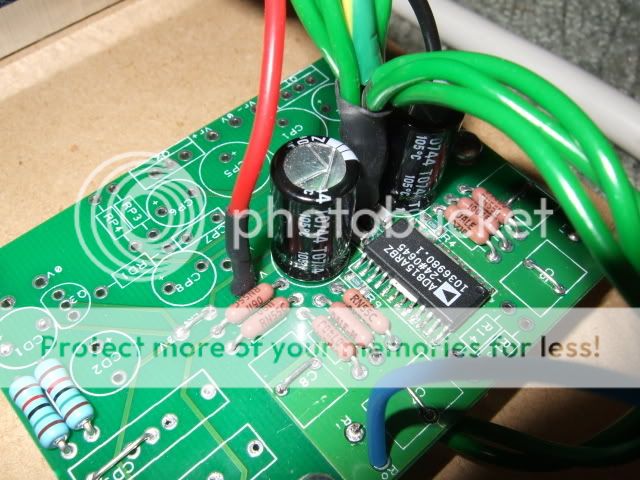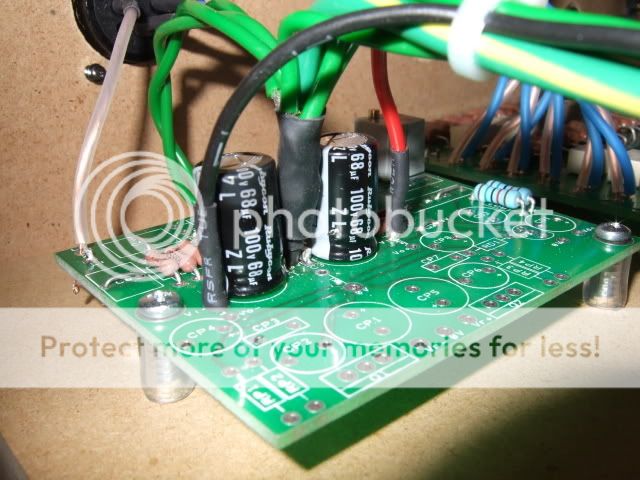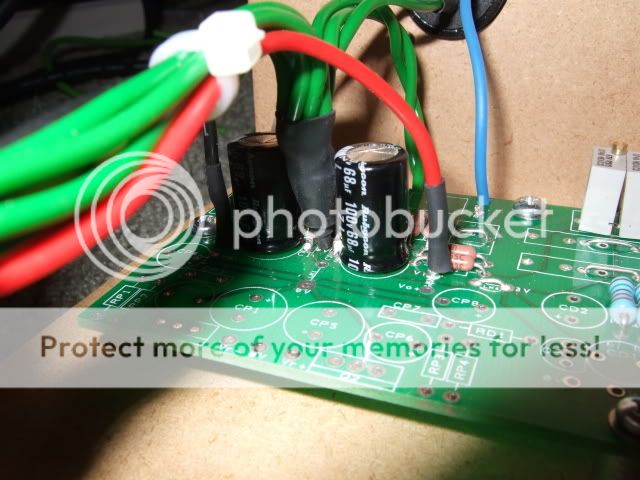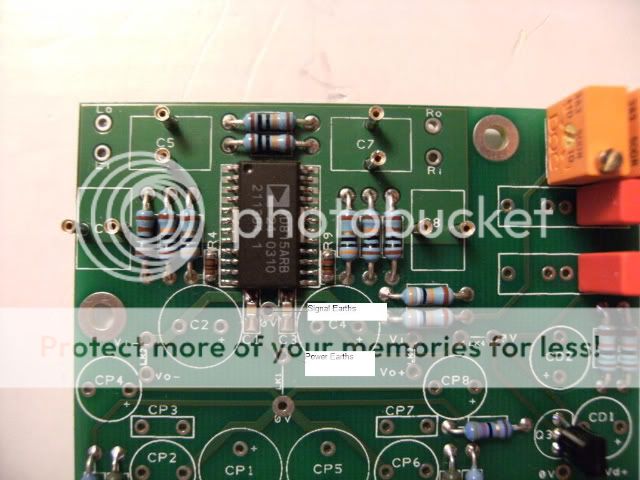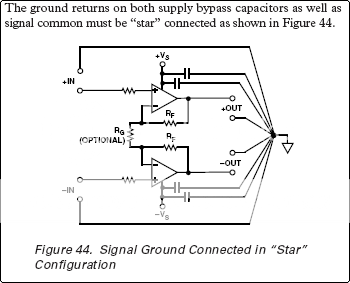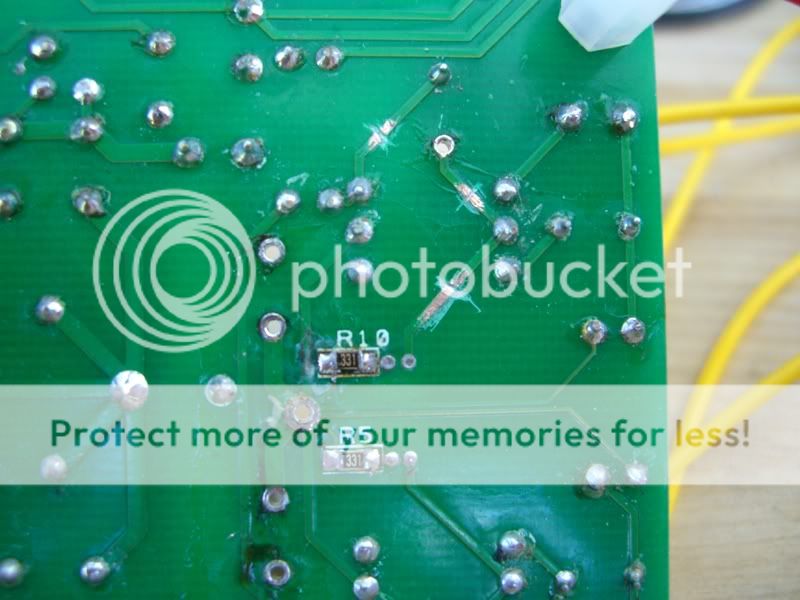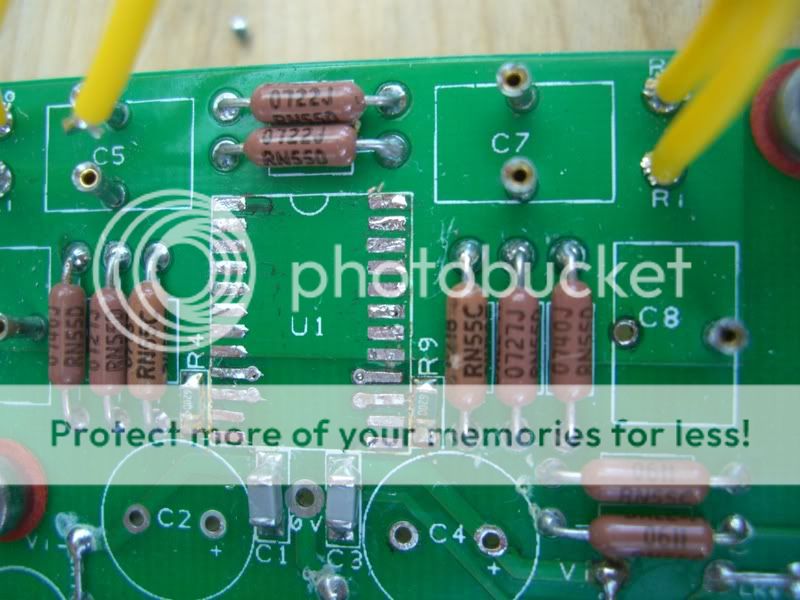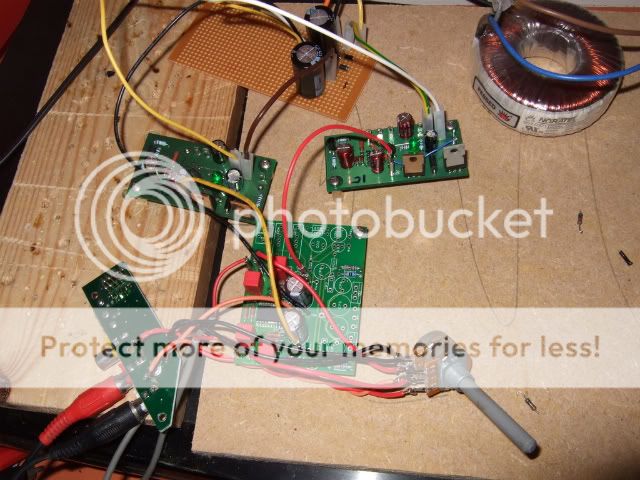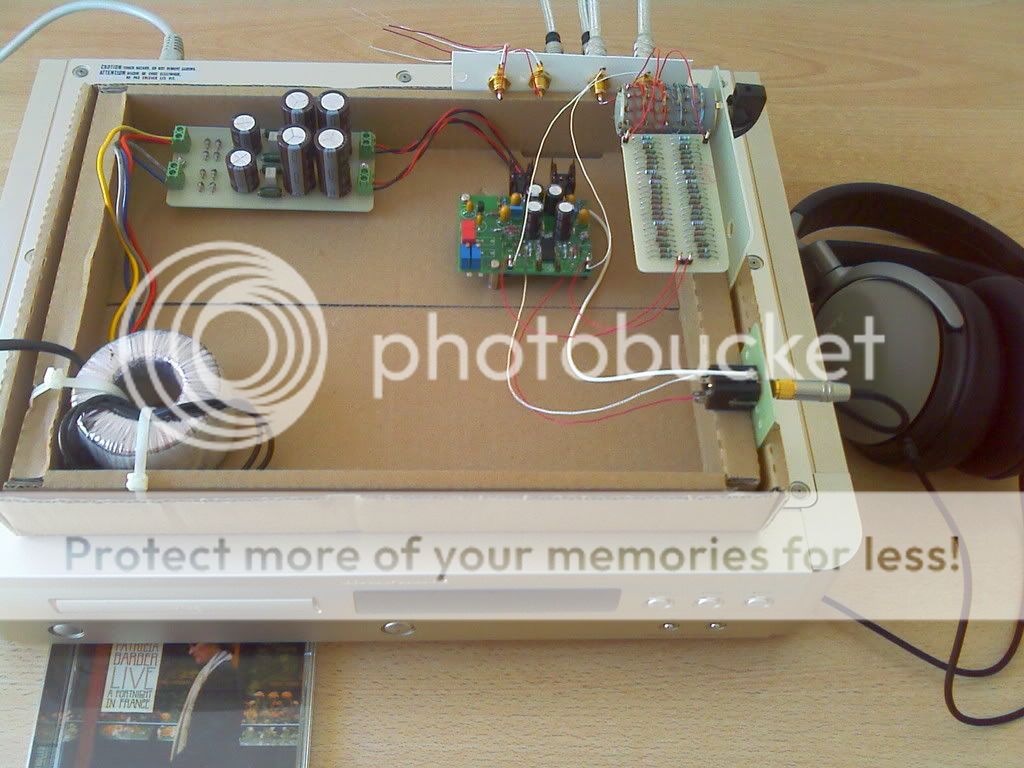Hi Carl,
Thanks for the pointer. I had a check and I don't see any bridges. Here are some pics - hopefully you chaps might be abe to spot something I didn't.
Cheers
Jon
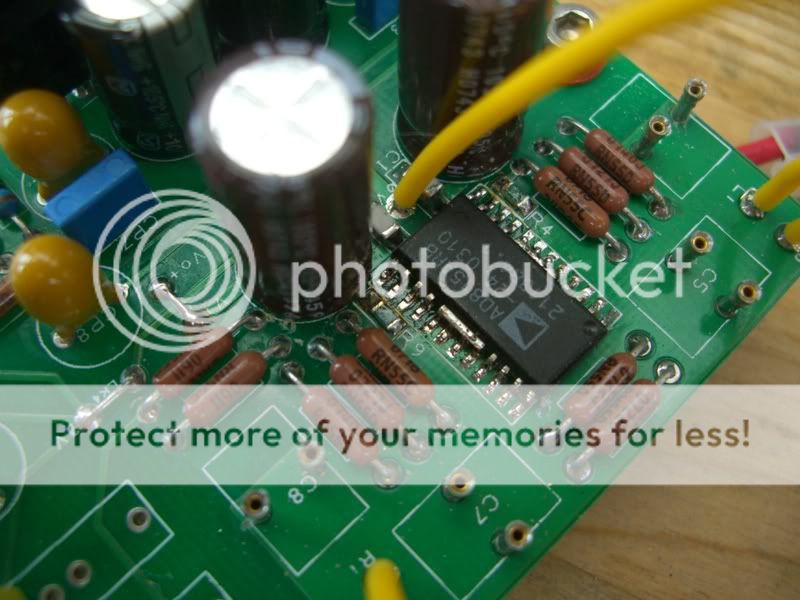
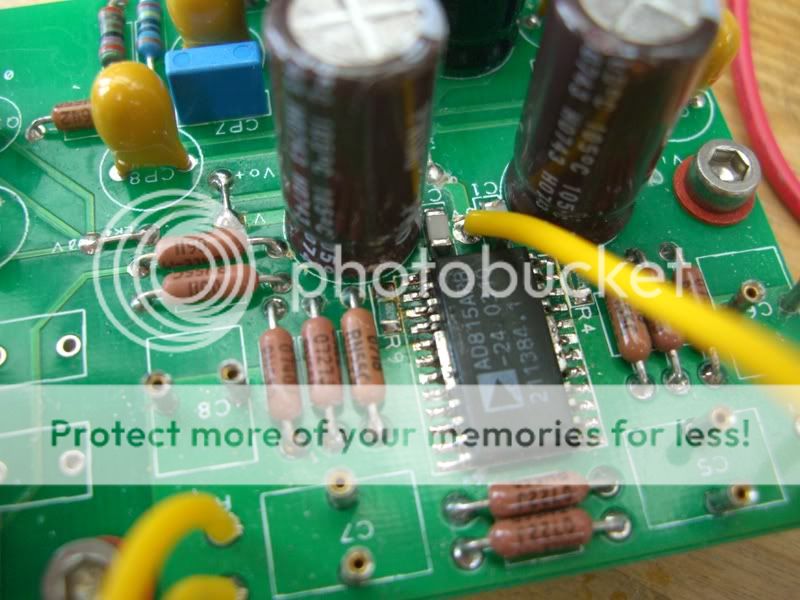
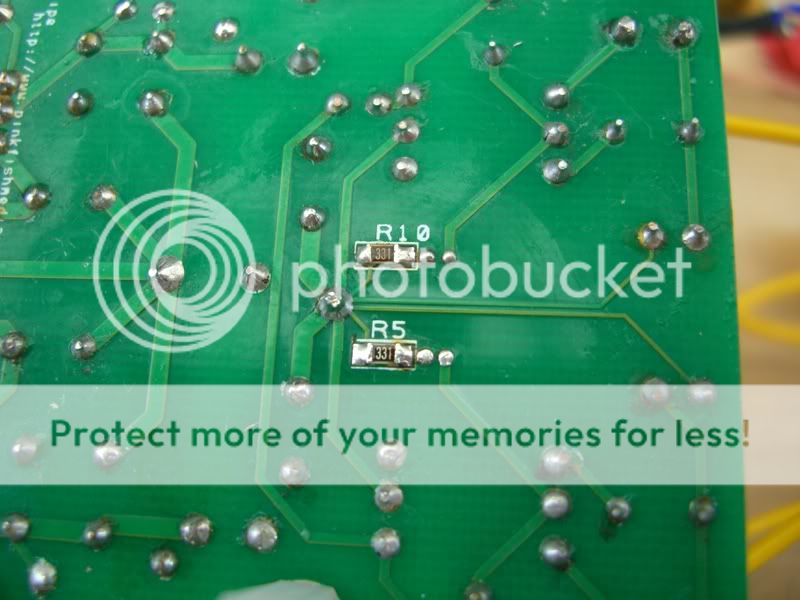
Thanks for the pointer. I had a check and I don't see any bridges. Here are some pics - hopefully you chaps might be abe to spot something I didn't.
Cheers
Jon



Hi Jon,
Have you checked that the lower pad of the SMD resistor R9 isn't bridged to pin 13? That would cause the effect you're experiencing. Same for a bridge between pins 13 and 14.
Other than that, it may be that you have a duff opamp
Good luck with it, and post some pictures when you can.
Cheers,
Carl


